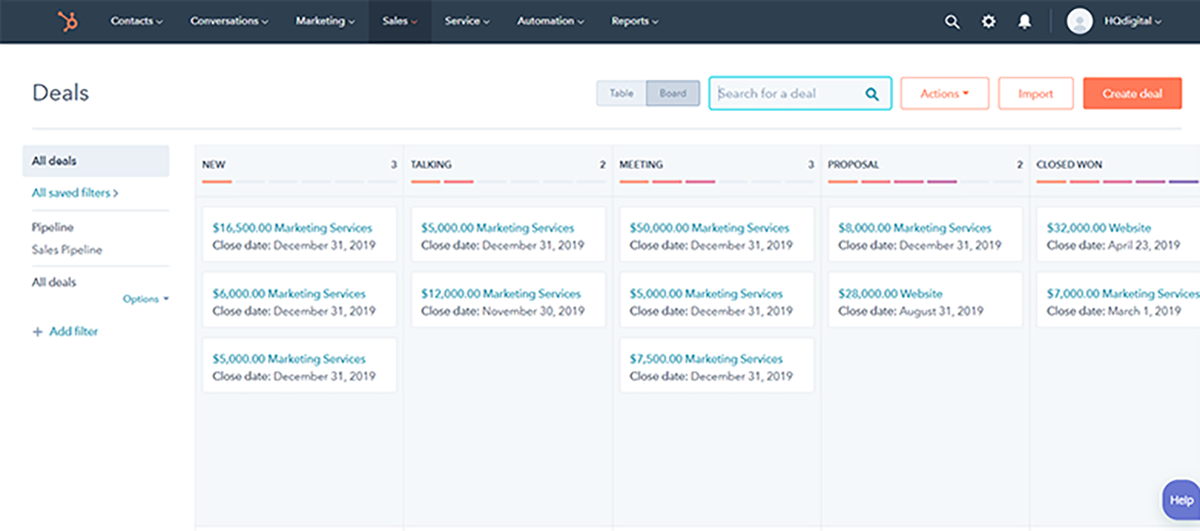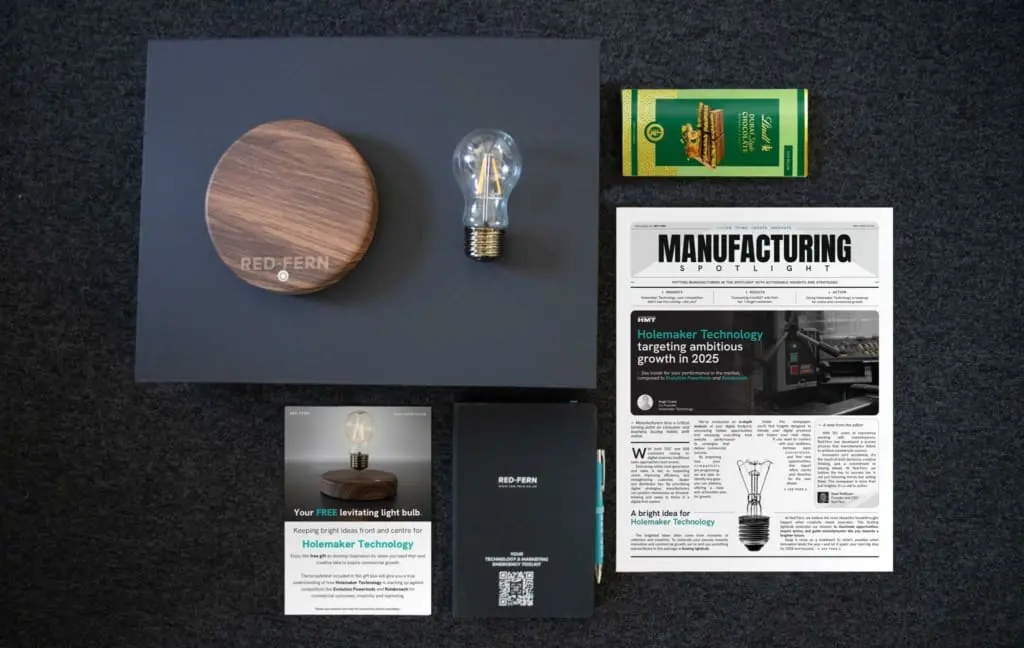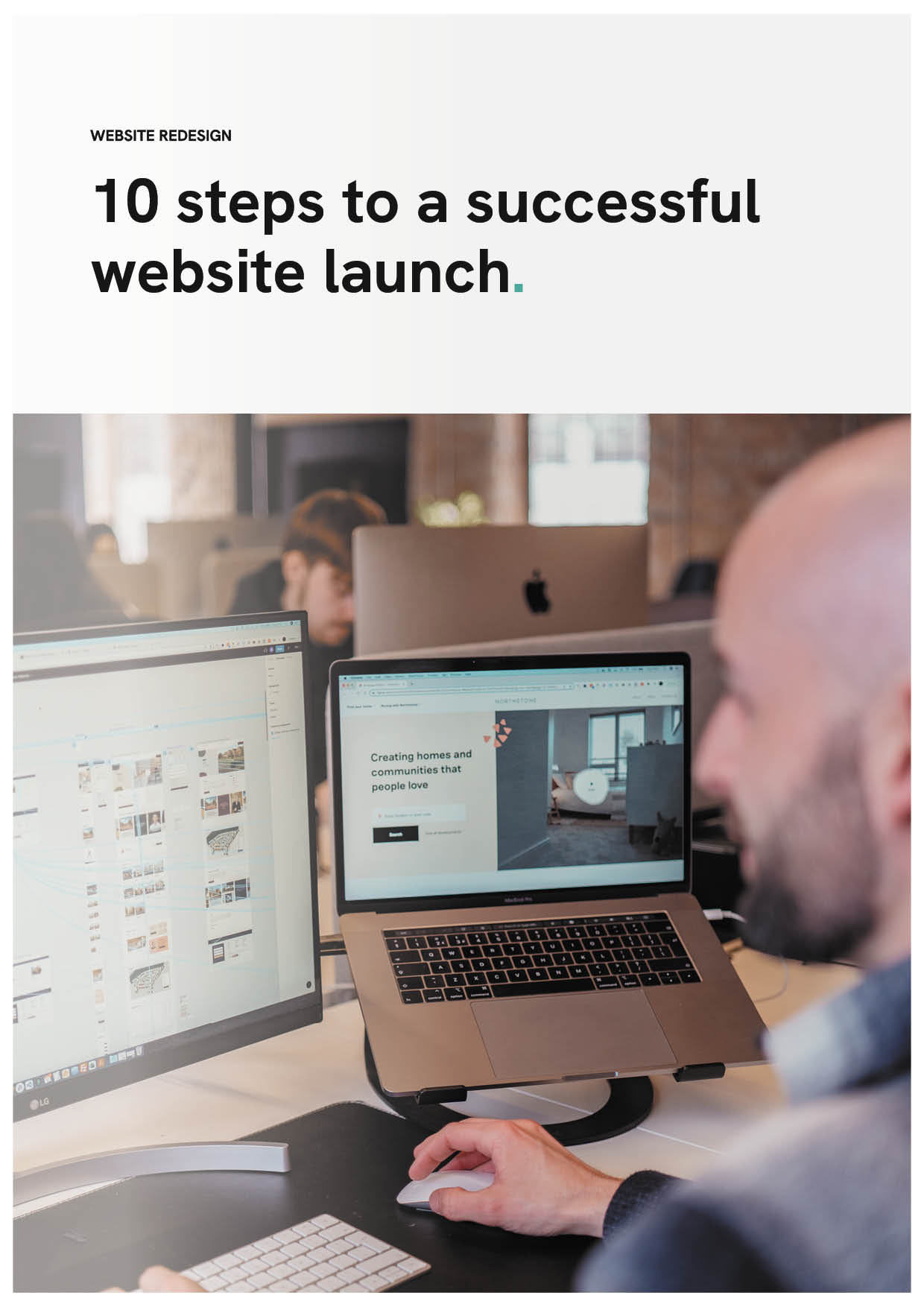Digital strategies with automation are your new friend.
The manufacturing sector is well known for having long sales cycles. Complex products, multiple decision-makers, and intricate procurement processes can extend the time from initial contact to closed deal. For Sales Directors in manufacturing, these prolonged cycles not only delay revenue but also strain resources and hinder forecasting accuracy.
However, the digital transformation sweeping across industries offers a beacon of hope. By leveraging digital tools and strategies, Sales Directors can navigate these challenges more effectively, shortening sales cycles and driving growth.
In this article, we’ll walk through 10 of the most common challenges Sales Directors face with long sales cycles. For each, we’ll clearly define the problem—and then show you exactly how digital strategies and tools can help solve it. This is a practical guide designed to help you act, not just observe.
No time to read this article, why not listen to the audio conversation.
1. Maintaining engagement over extended periods
Challenge: Keeping prospects engaged throughout a lengthy sales process is daunting. Interest can wane, and competitors may seize the opportunity.
Digital Strategy: Implement marketing automation platforms like HubSpot or Marketo to deliver personalised content at strategic intervals. Automated email sequences, tailored to the prospect’s stage in the buyer’s journey, can nurture leads and maintain engagement without manual intervention.
But automation alone isn’t enough—you also need valuable content to fuel it. Establishing a consistent thought leadership and blogging strategy gives your sales team a steady stream of insight-rich material to share via email and across social channels like LinkedIn. This keeps your brand front of mind and positions your company as a trusted expert throughout the long sales cycle.
Additionally, leverage social listening tools like Hootsuite or Brandwatch to monitor industry conversations and engage with prospects in real time. Responding to comments, joining discussions, and sharing timely insights helps you build relationships that stay warm, even when deals take months to close.
2. Inconsistent communication with prospects
Challenge: Disjointed communication can confuse prospects and erode trust, especially when multiple team members interact with them.
Digital Strategy: Utilise Customer Relationship Management (CRM) systems such as Salesforce or HubSpot CRM to centralise communication records. These platforms ensure that all team members have access to the latest interactions, enabling consistent and informed communication.
To get the most out of your CRM, introduce standardised logging practices—every call, email, and meeting should be recorded immediately after the interaction. This creates a living timeline of the relationship, so if an account manager is off or changes role, anyone can step in without losing context.
Set up automated activity alerts and internal notifications, so your team is notified when a prospect opens an email, downloads a brochure, or hasn’t been contacted in a week. This ensures timely follow-up and reduces the risk of a lead going cold due to oversight.
You should also implement templated communication sequences for common scenarios (e.g., post-demo follow-ups, proposal reminders), stored within the CRM. This enables consistent tone and messaging across the team, speeding up response times while maintaining a personalised approach.
3. Limited visibility into deal progression
Challenge: Without clear insights into where each deal stands, it’s challenging to forecast sales and identify bottlenecks.
Digital Strategy: To gain true visibility into deal progression, you need more than a spreadsheet — you need a visual sales pipeline that reflects real-time behaviours and buyer intent. Platforms like HubSpot allow you to create intuitive, drag-and-drop pipelines that track deals by stage, value, and close probability, giving Sales Directors instant clarity on where momentum exists and where it’s breaking down.

But, a pipeline is only as strong as the strategy behind it. Here are 5 key tactics to strengthen your sales pipeline and drive better outcomes:
- Automate follow-ups based on buyer actions:
Set up automated internal alerts when a stakeholder takes a high-intent action, like opening a proposal or viewing pricing pages. This allows reps to follow up while interest is high, increasing the chance of a next step. - Set deal stagnation triggers:
Use your CRM to flag deals that have been stuck in one stage for too long. Automatically assign a task to the rep to reassess the opportunity or escalate it for support. This helps keep momentum and avoids pipeline bloat. - Implement exit criteria for every stage:
Define what must happen before a deal moves from one stage to the next (e.g., “Decision-maker confirmed” or “Technical validation complete”). This reduces guesswork and improves the accuracy of forecasts. - Use weekly pipeline reviews for coaching:
Don’t just inspect the pipeline—coach from it. Use team reviews to identify stuck deals, celebrate progress, and collaborate on strategy. This shifts the culture from reporting to problem-solving. - Segment pipelines by product, region or deal type:
If you sell across markets or offerings, split your pipeline into views that reflect those distinctions. It helps identify trends and allocate resources more effectively, especially in complex sales environments.
A strong pipeline isn’t just a reporting tool—it’s a strategic asset. When used correctly, it gives Sales Directors the control, insight, and agility needed to close more deals, faster.
4. Siloed sales and marketing teams
Challenge: Lack of alignment between sales and marketing can lead to inconsistent messaging and missed opportunities.
Digital Strategy: Misalignment between sales and marketing in manufacturing is a silent killer of pipeline efficiency. To close more deals faster, these two teams need to operate as one revenue-generating unit. That starts with more than software—it starts with shared goals, shared data, and shared accountability.
Sales + Marketing = Smarketing
This is where Smarketing comes in—an industry term that fuses sales and marketing into a single, unified growth engine. When done right, Smarketing transforms how manufacturing companies attract, nurture, and convert leads. It turns two siloed departments into the ultimate powerhouse for predictable, scalable revenue growth.
To foster true Smarketing collaboration, you need to align systems, workflows, and people. Use tools like HubSpot to give both teams access to the same dashboards, lead scoring models, and performance metrics—then focus on behaviours and processes that keep both sides accountable to shared outcomes.
Here are 5 priority Smarketing tactics to implement first:
- Run monthly sales-marketing alignment meetings:
These aren’t just check-ins—they’re strategy sessions. Review campaign performance, surface feedback from the field, and refine your content and messaging based on what’s actually closing deals. - Build a unified lead scoring model:
Develop a single definition of a sales-qualified lead that both teams agree on. Use behavioural signals (like eBook downloads or product page visits) alongside firmographic data to guide lead handoff. - Create a shared content calendar:
Involve sales in content planning and creation. Build campaigns around real objections, FAQs, and decision-making pain points they hear daily, ensuring every asset supports live sales conversations. - Align on stage-based content enablement:
Tag each asset in your CRM or CMS by funnel stage. Equip sales with ready-to-use case studies, demo videos, and ROI decks they can instantly deploy based on buyer behaviour and deal progress. - Use closed-loop reporting to refine campaigns:
Feed sales data—conversion rates, deal velocity, lost deal reasons—back into marketing. Use it to adjust your targeting, tweak your messaging, and build smarter nurture flows.
Smarketing isn’t just a buzzword—it’s a growth strategy. In the complex, consultative sales cycles typical of manufacturing, it’s the only way to ensure every touchpoint moves the buyer closer to “yes.” When sales and marketing unite around the same pipeline and profit goal, the results are transformative.
5. Re-engaging decision-makers who have gone cold
Challenge: Prospects may disengage due to various reasons, making it difficult to reignite interest.
Digital Strategy: When a decision-maker goes quiet late in the sales cycle, it’s easy to lose the deal—and hard to restart the conversation. Retargeting and re-engagement tactics are essential to keep your brand front-of-mind and rebuild momentum without being intrusive.
While email nurture campaigns still have their place, LinkedIn should be your frontline tool for staying visible and relevant. Why? Because it allows you to show up organically in a space where decision-makers are actively consuming content—especially in the B2B manufacturing world.
Here are 5 proven tactics to re-engage cold prospects using LinkedIn and personalised digital strategies:
- Pair retargeting with email relevance:
Send an email that mirrors what prospects are seeing in your LinkedIn ads—a recent project, a success metric, or a video from your team. This omni-channel consistency reinforces the message and nudges engagement through familiarity. - Run linkedIn retargeting campaigns with human-focused creative:
Use LinkedIn Ads to retarget contacts who visited key pages (like pricing or proposal pages). Instead of generic ads, promote behind-the-scenes stories, client success videos, or “a day in the life” posts from your sales team. These personal, authentic narratives outperform cold corporate messaging and rebuild trust. - Share deal-relevant stories on your sales team’s personal profiles:
Have your sales reps post about similar client wins, common objections they’ve helped solve, or lessons learned from recent projects. When your inactive prospect sees peers engaging with relevant stories in their feed, they’re more likely to re-enter the conversation naturally. - Use mutual connections for subtle re-entry:
Identify shared connections using LinkedIn’s network tools and ask for introductions or shared content engagement. Even a like or comment from a mutual contact can act as a subtle nudge that sparks renewed interest. - Re-engage via personalised LinkedIn messages (Not Pitches):
Skip the “just checking in” email. Instead, send a personalised message referencing something meaningful—an industry change, a new article they were quoted in, or a relevant blog you’ve published. Keep it casual, value-first, and human.
While LinkedIn should be your frontline digital tool, Direct Mail marketing is still one of the most powerful and underutilised channels sales directors in manufacturing can utilise. When used strategically alongside your digital strategy, print delivers tangible value, creates emotional connection, and gets remembered—especially when inboxes and LinkedIn feeds are overcrowded.
This is Smarketing on steroids—where digital marketing and sales collaborate to create physical campaigns that are hyper-targeted, brand-driven, and deeply relevant to the individual buyer.

Here are 5 high-impact Direct Mail campaign ideas to re-engage prospects creatively:
- Promo boxes with a purpose:
Send a branded box with a clever product sample or tool that ties into your solution. For example, a “Time Saver” box featuring a custom stopwatch and case study showing how your tech reduces downtime. - The deal decision kit:
Package a printed proposal, ROI calculator, product sheet, and personalised video message in a premium folder. Include a note like “Let’s make this decision easy for you.” Make it feel exclusive, tailored, and high-stakes. - ‘Break the Silence’ desk drop:
Deliver a humorous or bold item like a branded “panic button” or “decision dice,” paired with messaging like “When the silence gets awkward, hit this.” It lightens the mood and opens the door for follow-up. - Industrial innovation zine:
Create a beautifully designed mini-magazine or zine showcasing your innovation, client success stories, and thought leadership. Send it as a quarterly print series to your top prospects to keep them thinking of you. - Executive gift with strategic call-to-action:
Send a high-quality, relevant gift (e.g., a laser-engraved multi-tool, sustainable journal, or tech gadget) with a handwritten note inviting them to book a follow-up conversation. Keep it tasteful and contextually relevant to their role or industry.
Why it works: Direct Mail cuts through the noise—literally. In a digital-dominated buying journey, a physical, well-designed piece stands out and shows extra effort. Combine this with LinkedIn re-engagement, email nurturing, and retargeting for a powerful omni-channel strategy that reignites interest and drives stalled deals forward.
In long sales cycles, attention is your currency—and Direct Mail helps you spend it wisely.
6. Manual tasks consuming valuable time
Challenge: Repetitive administrative tasks can divert sales teams from high-value activities.
Digital Strategy: One of the biggest drains on sales performance for sales directors in manufacturing? Admin.
Let’s be honest the thrill of the sale, the personal connection and the closing of the deal is what high-level sales people live for, not the process of booking the job into the business.
Manual data entry, endless scheduling back-and-forth, and repetitive follow-ups are productivity killers that slow reps down and extend already long sales cycles.
Automation doesn’t just save time—it removes friction and increases consistency. By streamlining repetitive tasks, your sales team can stay focused on what truly moves the needle: engaging prospects, building relationships, and closing high-value deals.
Here are 5 key automation tactics every manufacturing sales team should implement immediately:
- Auto-sync lead data from forms to CRM:
Use tools like HubSpot or Zapier to connect your website forms directly to your CRM. When a lead fills in a contact or download form, their details are auto-logged, scored, and assigned without anyone needing to touch a keyboard. - Automated meeting scheduling with custom links:
Equip reps with tools like Calendly or HubSpot Meetings. Set availability preferences and embed these links in emails or on landing pages, allowing prospects to book time instantly—no back-and-forth or email chains. - Follow-up email sequences triggered by lead behaviour:
Set up email workflows that trigger based on actions like form submissions, email opens, or proposal views. For example, if a prospect downloads a brochure but doesn’t respond, automatically send a value-add follow-up three days later. - Deal stage triggers for internal workflows:
Configure your CRM so that moving a deal to a new stage triggers internal actions—like assigning a task to a technical specialist, or notifying finance to prep contract terms. This keeps the process fluid and cross-functional teams in sync. - Quote and proposal automation:
Use document automation tools to pre-fill proposal templates with CRM data (client name, products, pricing). This can reduce proposal turnaround times from days to minutes—while ensuring brand consistency and accuracy.
When automation becomes part of your sales DNA, reps don’t waste time on admin—they spend it selling. In long-cycle environments like manufacturing, even small efficiencies compound into big pipeline gains.
7. Educating multiple stakeholders effectively
Challenge: Manufacturing sales often involve multiple stakeholders, each with unique concerns and knowledge levels.
Digital Strategy: No two stakeholders have the same priorities. While a technical manager needs spec sheets and system compatibility, a CFO wants ROI proof, and a COO cares about operational impact. Relying on generic sales decks won’t cut it—you need a tailored content strategy that speaks directly to each decision-maker.
A centralised content hub serves as the engine room of your sales enablement efforts. It gives your sales team instant access to high-quality, stakeholder-specific materials they can deploy at the right time, to the right people, in the right format.
Here are three tactics to implement this strategy effectively:
- Segment content by persona and buying stage:
Organise your hub so reps can filter content by both persona (e.g., Technical Director, Procurement Lead, Finance Manager) and stage (awareness, consideration, decision). This makes it easy to find and send the most relevant piece based on who they’re talking to and where that person is in the journey. - Embed interactive content that tracks engagement:
Include interactive product demos, ROI calculators, or configurators within the hub. These not only deliver richer buyer experiences—they also feed engagement data back into your CRM. Reps can then see which stakeholders are interacting and what they’re interested in, helping them prioritise follow-ups. - Create one-click sharing tools for sales reps:
Equip your sales team with personalised micro-sites or email-ready bundles they can send in seconds. For example, after a discovery call, a rep could share a tailored link with relevant videos, use cases, and testimonials—designed specifically for the stakeholder mix on that account.
This approach doesn’t just educate—it empowers. The right content, delivered in the right format, accelerates understanding and confidence, helping buyers move faster through complex decisions.
8. Capturing and following up with trade show leads
Challenge: Trade shows generate numerous leads, but without a systematic follow-up process, many opportunities are lost.
Digital Strategy: Trade shows and manufacturing expos are goldmines for sales—but too often, the energy ends when the booth comes down. Without a structured digital process, leads fall through the cracks, get logged late, or aren’t followed up properly. The result? Wasted budget and missed opportunities.
Here’s how to turn every booth conversation into a potential deal using mobile lead capture tools and automation:
5 tactics to nail trade show lead follow-up:
- Use mobile lead capture apps with real-time sync to CRM:
Equip your team with mobile apps (like HubSpot’s Lead Capture, iCapture or Jotform) that scan badges or manually log conversations. Ensure data syncs instantly to your CRM with custom fields for product interest, sales rep name, or buying timeline. - Tag and score leads on the spot:
During or immediately after each interaction, assign lead scores or tags based on interest level. For example: “Hot – wants demo,” “Warm – needs pricing,” “Cold – general interest.” This lets you prioritise follow-up by deal potential, not just alphabetical order. - Trigger automated follow-up within 24 hours:
Use your CRM to launch pre-built workflows post-event. Send tailored thank-you emails that reference the show, offer value (e.g., a guide, case study, or booking link), and clearly state next steps—before your competitors even send their first message. - Send personalised linkedIn connection requests after the show:
Sales reps should follow up with each qualified lead via LinkedIn, referencing the event in their message. This creates a secondary channel of communication and increases the chance of engagement during the nurture phase. - Use a post-show content series to educate and convert:
Create a short drip campaign tailored to the trade show theme—like a 3-part email series with client stories, technical insights, and a call to action for a demo or strategy session. Keep it focused, relevant, and tightly timed to stay top of mind.
Trade shows shouldn’t just be about brand presence—they should fill your pipeline. When digital tools and structured workflows support your field sales efforts, events become a reliable and repeatable source of real revenue.
9. Accurate revenue forecasting
Challenge: Inaccurate forecasts can lead to resource misallocation and missed targets.
Digital Strategy: In long, complex sales cycles, sales directors in manufacturing often find forecasting becomes a major challenge. Deals stall, stakeholders go quiet, and close dates constantly shift. This makes it incredibly difficult for Sales Directors to plan resources, set revenue targets, or keep leadership confident in the numbers.
That’s where AI-powered forecasting tools step in. By analysing both historical performance and real-time pipeline signals, these platforms can surface patterns, identify risk early, and deliver data-driven predictions that are far more reliable than gut instinct.
Here are 5 forecasting tactics to improve accuracy and drive smarter decisions:
- Use Weighted AI Forecast Models Based on Behavioural Signals:
Rather than forecasting based only on deal stage or rep confidence, use models that weigh behavioural data—like number of stakeholder meetings, proposal views, email engagement, and decision-maker activity. This helps surface which deals are actually likely to close on time. - Implement Deal Health Scores Across the Pipeline:
Use AI to generate a “deal health score” based on velocity, engagement, and historic win/loss patterns. Reps can focus on high-potential deals, while managers quickly spot at-risk opportunities before they collapse. - Segment Forecasts by Persona, Product, or Region:
Break down forecasts by customer type, deal category, or geography. This helps you spot where long cycles are consistently slowing progress and where to invest more attention or process improvements. - Use Predictive Scenarios to Model Best, Worst, and Likely Outcomes:
AI tools can simulate different forecasting scenarios—e.g., if 30% of proposals convert within 45 days, what’s your likely revenue? This empowers Sales Directors to plan proactively for resource allocation, capacity, and cash flow. - Integrate Forecast Data with Operations and Finance Dashboards:
Use platforms like HubSpot, InsightSquared, or Clari to sync AI forecasts directly into broader business intelligence tools. This allows cross-functional leaders (Ops, Finance, Production) to plan around actual revenue expectations rather than static quotas.
Modern forecasting isn’t about spreadsheets and hope—it’s about real-time visibility and informed action. With AI-powered forecasting embedded in your sales process, you’re no longer reacting to pipeline chaos—you’re anticipating it, adjusting early, and leading with confidence.
10. Empower Sales Reps with Microlearning for Complex Products
Challenge: Reps often struggle to confidently explain technical solutions—especially when products evolve, or new offerings launch mid-cycle. This can cause delays, missed opportunities, and inconsistent messaging.
Digital Strategy: Integrate micro-learning into your sales enablement strategy. Short, focused training modules (2–5 minutes) delivered via mobile or LMS platforms keep your team sharp without taking them out of the field.
Here’s how to make it effective:
- Launch a weekly “product knowledge burst” that covers one feature, use case, or objection handling tip.
- Use quiz-based formats or gamified leaderboards to boost engagement and retention.
- Tie microlearning topics to real pipeline priorities—e.g., if there’s a push on a new solution, deliver training around it.
This keeps reps confident, up-to-date, and capable of leading high-value technical conversations that advance the deal. In a world where buyers do their homework, your reps need to be not just sellers—but advisors.


